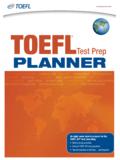Transcription of ABOUT EPILEPSY
1 1 ABOUT EPILEPSYS eizure Management And Responsive TreatmentManual for Personnel to Assist Students with EPILEPSY Managing EPILEPSY in the Schools2 Comprehensive Resource & Training Manual for School Personnel. The EPILEPSY Association, in partnership with the Cleveland Metropolitan School District and the EPILEPSY Association s Professional Advisory Board Nurse Advisory Committee, developed this manual through grants provided by the Mt. Sinai Health Care Foundation and Kaiser Permanente. EPILEPSY Association2831 Prospect , Ohio 44115 Phone: 216-579-1330 Fax: Introduction 4-5II. Using this Manual 6-7 III. Acknowledgments 7I V. What Is EPILEPSY ? 8-10 What Is a Seizure? What Causes EPILEPSY ?
2 Where Do Seizures Happen in the Brain? What Are the Symptoms of a Seizure? Do People Know When a Seizure Is Going To Happen? What Triggers a Seizure? Facts ABOUT EPILEPSY Incidence and Prevalence of EpilepsyV. Types of Seizures 11-13 Partial Seizures Generalized Seizures Types of Generalized Seizures Non-Epileptic SeizuresVI. First Aid for Seizures 14-15 When Is a Seizure an Emergency? When Is a Seizure Life Threatening?VII. How is EPILEPSY Diagnosed? 16 VIII. Medical Treatment of EPILEPSY 16-18 Use of Emergency Medication Surgery Vagus Nerve Stimulator Ketogenic Diet Can EPILEPSY Be Prevented?IX. Critical Information for All School Personnel 18-24 Learning/Academic Issues Emotional and Behavioral Issues Depression Common Signs of Depression for Students with EPILEPSY Anxiety Common Signs of Anxiety for the Students with EPILEPSY Attention Deficit Hyperactivity Disorder/Attention Deficit Disorder Irritability Aggression Social IssuesX.
3 Special Considerations 25-49 Section1: Police & Security Officers Section 2: Bus Drivers & Monitors Section 3: Family Liaisons & Social Workers Section 4: School Nurses Section 5: Teachers & Paraprofessionals Section 6: Psychologists, Therapists & Counselors Section 7: Physical Education Teachers & CoachesXI. Bibliography 50-55 XII. Online Resources Available HereTAblE of ConTEnTs34 EPILEPSY affects approximately million people in the and 50 million worldwide. EPILEPSY strikes most often among the very old and the very young, although anyone can get it at any age. In the it currently affects more than 326,000 children under age fifteen. for students in grades K through 12 who have EPILEPSY , the experience of living with EPILEPSY is not just based on their management of the condition.
4 The experience of living with EPILEPSY is also based on their interaction with staff and other students. IntroductionDID YoU KnoW? Head injury is the primary cause of EPILEPSY in children. Of the major chronic medical conditions, EPILEPSY is among the least understood, even though one in three adults knows someone with the of knowledge ABOUT proper seizure first aid exposes individuals with EPILEPSY to injury from unnecessary restraint and from objects needlessly forced into the leading non-medical problem confronting people with EPILEPSY is discrimination in education, employment, and social acceptance. Research indicates higher rates of EPILEPSY among racial and ethnic minorities, people of lower socioeconomic status, people living in rural areas, and public understanding of EPILEPSY has been found to contribute to the stigma attached to EPILEPSY by perpetuating negative attitudes towards individuals who have EPILEPSY .
5 5 HoW ArE sTUDEnTs AffECTED bY EPILEPSY ?Students with EPILEPSY are at increased risk for academic underachievement, particularly in the basic skills of reading, language, and arithmetic. Many students with EPILEPSY are found to be significantly behind their peers in academic achievement levels, ranging from 16% below their grade in reading to 50% in general knowledge. Children with EPILEPSY have been found more likely to have impairment in their self-concept and behavior when compared to children with other chronic with severe EPILEPSY are likely to experience social rejection from seizures (Status Epilepticus) may result in death for 25% of individuals with nEWsFor ABOUT 80% of individuals who are diagnosed with EPILEPSY , seizures can be controlled with adherence to the prescribed treatment regimen.
6 Triggers to seizures can be monitored to reduce the likelihood of them occurring. For the 20% of individuals who have uncontrolled seizures, there are other surgical and non-surgical treatment methods that can help to reduce the frequency of seizures. EffECTIvE sEIzUrE MAnAGEMEnT CAn rEsUlT In: A supportive learning environment for students with EPILEPSY . Decreased likelihood of underachievement for students with EPILEPSY . Reduced disruption in the classroom. When staff is knowledgeable ABOUT EPILEPSY and can respond appropriately to a student having a seizure, the uncertainty and fear common among other students in the classroom can be reduced. Reduced and appropriate emergency care.
7 Staff members knowledgeable ABOUT EPILEPSY are aware that not every seizure warrants calling 9-1-1. If physical education instructors and coaches have an awareness of guidelines for sports safety for students with EPILEPSY , they are less likely to impose unnecessary restrictions on student participation. Increased self esteem for individuals with EPILEPSY . After a seizure, students who have a positive interaction and experience with staff and peers are more likely to feel better ABOUT who they are as a person and that they are not defined by their EPILEPSY . School Staff play a critical role in helping students manage their EPILEPSY . A collaborative effort of students, parents, and medical providers can create a safe and healthy school environment to ensure best practices in the management and response to EPILEPSY .
8 This manual was designed to educate school personnel ABOUT EPILEPSY and help facilitate practices that will lead to an optimal learning environment for students. The manual contains general information ABOUT EPILEPSY , basic seizure first aid, and special considerations for different types of school personnel in their daily interactions with the student with EPILEPSY . The information in this manual can be photocopied and distributed to school personnel or other interested individuals. The entire manual is available on the EPILEPSY Association website at This manual has been developed to help school personnel increase their awareness of EPILEPSY and seizures and increase their ability to appropriately respond to students who have seizures.
9 Through a collaboration of students, parents, school personnel, and medical providers, effective EPILEPSY management and response can be achieved. This is the first step in creating a safe and healthy environment for students with EPILEPSY and one that will reduce the stigma associated with the condition. Using this manual67 This manual is not intended to replace services provided by the appropriately licensed medical professional or to be a substitute for medical advice provided by physicians. The user should suggest the student s parent or guardian consult a physician in all matters relating to their child s health, particularly in respect to any symptoms that may require further diagnostic evaluation or more prompt medical attention.
10 RECoMMEnDATIons for UsErs of THIs MAnUAlAll school personnel performing duties that are the primary responsibility of a licensed health care staff member should be appropriately trained in order to meet state/district policies, standards, guidelines and personnel must be trained to administer medications properly and be overseen by a Registered Nurse (RN) who has evaluated their ability to perform those tasks safely and accurately. Performing these duties without proper training, licensure, and supervision can put the individual student at risk and increase the liability risk of administrative school should always be aware of the policies and procedures of the School District that guide the actions/response of all district school questions regarding school health issues, including EPILEPSY , please contact your district s health service contributing participants that took part in the development of this manual are members of the Nurse Advisory Committee.





